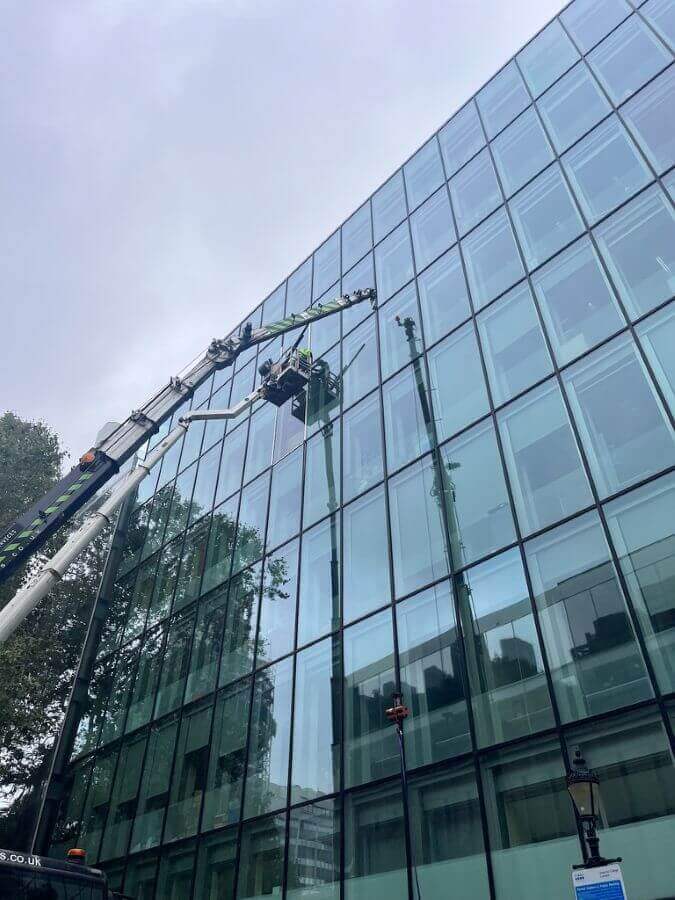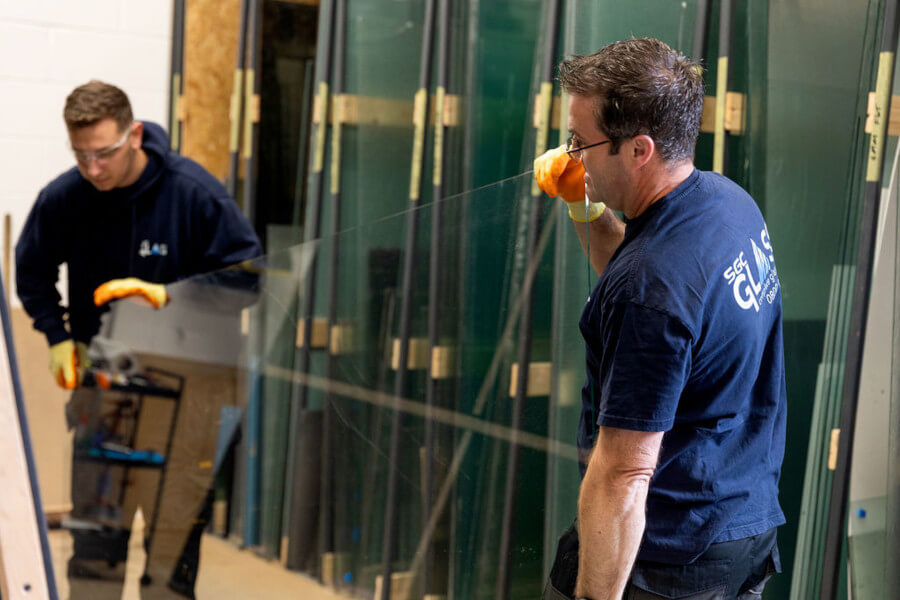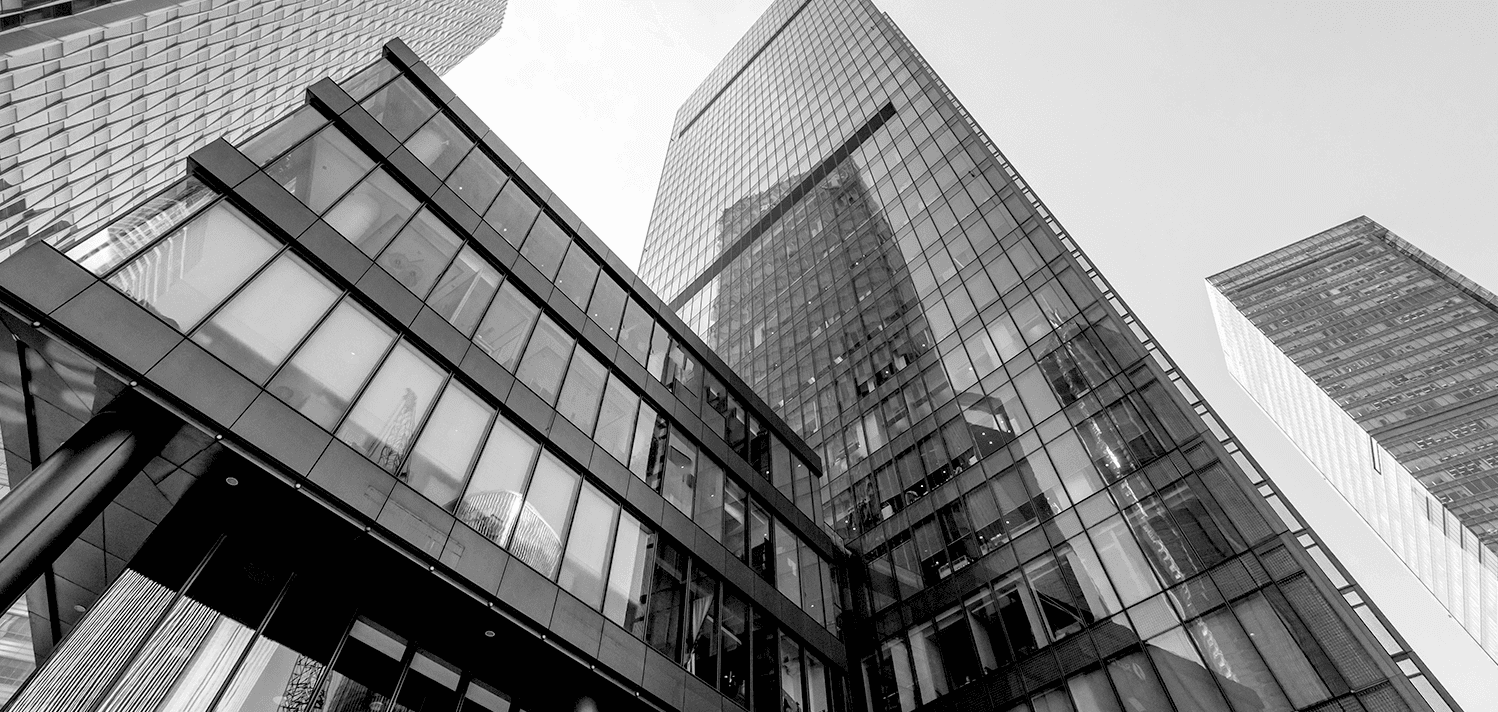Understanding the manufacturing process of commercial glass
- 26 February 2025
- Blog

Commercial glass is a fundamental element in modern architecture, offering durability, functionality, and visual appeal for a variety of applications. From towering office buildings to sleek retail shopfronts, glass plays a critical role in creating contemporary and energy-efficient spaces.
But have you ever wondered how commercial glass is made?
Understanding the manufacturing process of commercial glass provides insight into the craftsmanship, technology, and precision involved in delivering high-quality glass products.
The raw materials: What goes into commercial glass?
Glass manufacturing begins with a mixture of raw materials, carefully selected to ensure strength, clarity, and performance. The primary components include:
- Silica sand – The main ingredient, providing the base structure of the glass.
- Sodium carbonate – Lowers the softening point of silica, making it easier to work with.
- Limestone (calcium carbonate) – Adds durability and prevents the glass from dissolving in water.
- Dolomite – Improves resistance to thermal shock and increases hardness.
- Alumina and fluorine – Boosts chemical durability and optical properties.
- Waste glass (cullet) – Used to improve sustainability by reducing the energy required for melting.
These ingredients are measured precisely to ensure consistency in the glass manufacturing process. The mixture of raw materials is then transferred to the furnace for melting.
The melting process: Transforming solids into molten glass
Once the raw materials are combined, they are heated in a typical glass furnace to extreme temperatures, often exceeding 1,500°C. This process melts the materials into molten glass, removing impurities and ensuring uniformity.
Types of furnaces used in glass production
There are several types of furnaces used in commercial glass manufacturing, including:
- Regenerative furnaces – Efficiently recycle heat to maintain high temperatures.
- Electric furnaces – Used for specialised glass types requiring precise control.
- Oxygen-fuel furnaces – Reduce emissions and improve energy efficiency.
At this stage, careful monitoring ensures the molten material reaches the right viscosity before moving on to the forming process.

Forming the glass: Creating the desired shape and thickness
Once in a liquid state, the molten glass is shaped using various forming processes. The most widely used method in commercial glass production is the float glass process.
What is the float glass process?
The float glass process involves pouring molten glass onto a bed of molten tin. This allows the glass to spread evenly, creating a uniform sheet with a smooth surface. The result is high-quality glass with minimal imperfections.
During this process, the thickness of the glass is controlled by adjusting the speed at which it moves through the system. Commercial glass typically varies in thickness depending on its intended application, from thin windowpanes to heavy-duty shopfront panels.
Cooling and annealing: Reducing internal stresses
Once the glass sheet is formed, it must be cooled gradually to prevent fracture due to internal stresses. This process, known as annealing, takes place in a kiln or a long temperature-controlled tunnel called a lehr.
As the glass cools, it undergoes structural stabilisation to ensure strength and durability. Without proper annealing, the resulting internal stresses could make the glass prone to breaking.

Fabrication and finishing: Tailoring the glass for use
After annealing, the final product undergoes fabrication, where it is cut, shaped, and treated according to its intended application. Depending on the type of glass, additional treatments may be applied, including:
- Laminating – Inserting interlayers for increased strength and safety.
- Tempering – Heating and rapidly cooling to improve resistance to impact.
- Coating – Applying films to improve insulation, reduce glare, or add colour.
- Polishing – Ensuring a smooth glass surface for aesthetics and performance.
These treatments enhance the glass’s properties, ensuring it meets industry standards and client specifications.
Quality control: Ensuring consistency and safety
In the glass industry, rigorous quality control measures are essential. Glass is inspected for imperfections, thickness uniformity, and structural integrity. Automated scanning systems detect any defects, ensuring only the highest-quality glass products make it to market.
Safety is also paramount, especially for applications in commercial glazing. Fire-rated and impact-resistant glass undergoes additional testing to meet regulatory requirements and minimise the risk of injury.
Packaging and shipment: Preparing glass for installation
Once the glass has passed quality control, it is carefully packaged to prevent damage during shipment. Specialised packaging materials, such as graphite pads and cushioned crates, protect the piece of glass from scratches or breakage.
For large-scale commercial projects, glass panels are transported using precision logistics to ensure they arrive in perfect condition for installation.
How does the manufacturing process impact energy efficiency?
Modern glass production techniques prioritise energy efficiency and sustainability. The use of recycled waste glass, optimised types of furnaces, and advanced coatings help reduce energy consumption in both manufacturing and building applications. High-performance glazing solutions contribute to reduced heating and cooling costs, making them a sustainable choice for commercial properties.

Installation: Bringing commercial glass to life
Once the glass reaches its destination, it undergoes installation by expert commercial glaziers. At SGC Glass, we specialise in providing top-quality commercial glazing solutions in London, Essex, and surrounding areas. Our services include:
- Custom shopfronts for retail and hospitality.
- Glass partitions and balustrades for offices and public buildings.
- Energy-efficient glazing for improved insulation.
- Fire-rated glass to meet stringent safety regulations.
Our highly trained team ensures that every installation is carried out with precision, using specialised equipment to handle even the most complex projects. With years of experience and a commitment to excellence, we provide solutions that are durable, reliable, and visually striking.
Choose SGC Glass for high-quality commercial glazing
The manufacturing process of commercial glass is a complex yet fascinating journey, from raw material selection to expert installation. At SGC Glass, we understand the importance of high-quality materials and expert craftsmanship in delivering exceptional results for our clients.
If you’re looking for premium commercial glazing solutions, whether for a new shopfront, office partition, bespoke architectural feature, or commercial window installation, we’re here to help. Contact us today to discuss your project and discover how our expertise can bring your vision to life.











